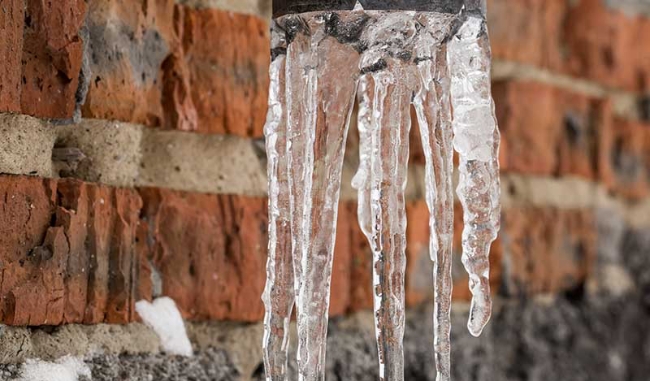Crucial Tips to Prevent Frozen Plumbing in Cold Weather
Crucial Tips to Prevent Frozen Plumbing in Cold Weather
Blog Article
How do you really feel on the subject of 6 Ways to Prevent Frozen Pipes?

Winter can wreak havoc on your pipes, specifically by freezing pipelines. Below's how to avoid it from occurring and what to do if it does.
Intro
As temperature levels decline, the threat of frozen pipes boosts, potentially resulting in costly repairs and water damages. Recognizing exactly how to avoid icy pipelines is important for home owners in chilly climates.
Understanding Frozen Pipelines
What creates pipes to freeze?
Pipes ice up when subjected to temperatures below 32 ° F (0 ° C) for extended durations. As water inside the pipelines freezes, it increases, taxing the pipe wall surfaces and possibly causing them to rupture.
Dangers and problems
Frozen pipes can result in supply of water disruptions, property damages, and expensive fixings. Burst pipelines can flooding homes and trigger extensive architectural damage.
Signs of Frozen Pipeline
Identifying icy pipelines early can stop them from bursting.
Just how to determine icy pipelines
Seek lowered water flow from faucets, uncommon odors or noises from pipelines, and visible frost on revealed pipes.
Prevention Tips
Shielding vulnerable pipes
Cover pipelines in insulation sleeves or make use of heat tape to secure them from freezing temperature levels. Concentrate on pipes in unheated or exterior areas of the home.
Heating methods
Maintain indoor rooms properly heated, particularly areas with pipes. Open up closet doors to enable cozy air to distribute around pipes under sinks.
Safeguarding Outside Plumbing
Garden tubes and exterior faucets
Separate and drain pipes garden hose pipes prior to winter months. Install frost-proof faucets or cover exterior taps with shielded caps.
What to Do If Your Pipelines Freeze
Immediate activities to take
If you believe icy pipes, maintain taps open to relieve stress as the ice melts. Make use of a hairdryer or towels soaked in warm water to thaw pipelines slowly.
Long-Term Solutions
Architectural modifications
Consider rerouting pipes far from exterior walls or unheated locations. Include additional insulation to attic rooms, cellars, and crawl spaces.
Updating insulation
Invest in top notch insulation for pipelines, attics, and wall surfaces. Proper insulation aids preserve constant temperature levels and decreases the risk of frozen pipelines.
Verdict
Stopping frozen pipelines requires positive measures and fast responses. By comprehending the reasons, signs, and safety nets, homeowners can secure their pipes during cold weather.
5 Ways to Prevent Frozen Pipes
Drain Outdoor Faucets and Disconnect Hoses
First, close the shut-off valve that controls the flow of water in the pipe to your outdoor faucet. Then, head outside to disconnect and drain your hose and open the outdoor faucet to allow the water to completely drain out of the line. Turn off the faucet when done. Finally, head back to the shut-off valve and drain the remaining water inside the pipe into a bucket or container. Additionally, if you have a home irrigation system, you should consider hiring an expert to clear the system of water each year.
Insulate Pipes
One of the best and most cost-effective methods for preventing frozen water pipes is to wrap your pipes with insulation. This is especially important for areas in your home that aren’t exposed to heat, such as an attic. We suggest using foam sleeves, which can typically be found at your local hardware store.
Keep Heat Running at 65
Your pipes are located inside your walls, and the temperature there is much colder than the rest of the house. To prevent your pipes from freezing, The Insurance Information Institute suggests that you keep your home heated to at least 65 degrees, even when traveling. You may want to invest in smart devices that can keep an eye on the temperature in your home while you’re away.
Leave Water Dripping
Moving water — even a small trickle — can prevent ice from forming inside your pipes. When freezing temps are imminent, start a drip of water from all faucets that serve exposed pipes. Leaving a few faucets running will also help relieve pressure inside the pipes and help prevent a rupture if the water inside freezes.
Open Cupboard Doors
Warm your kitchen and bathroom pipes by opening cupboards and vanities. You should also leave your interior doors ajar to help warm air circulate evenly throughout your home.

I discovered that review about Preventing and dealing with frozen pipes while doing a search on the internet. Sharing is caring. You never know, you will be doing someone a favor. Thank you so much for your time spent reading it.
Click Here Report this page